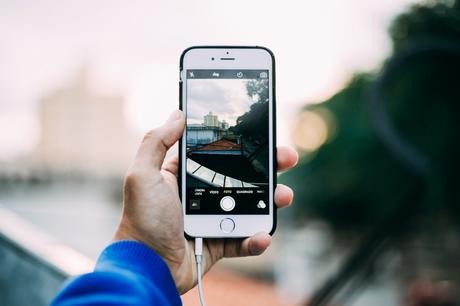
The term " Visual Search Marketing" has been around for a number of years. Although large companies like Bing, Yahoo and Google have been utilizing visual search technology in their search engines for a while now, it wasn't until recently that this type of technology reached a point where it could become a top trend in the digital marketing world.
In this blog, we'll walk you through the basics of what visual search is, and why it is on the cusp of becoming the biggest marketing trend of 2021.
What is Visual Search?Simply put, visual search uses Artificial intelligence (AI) technology to help people search for items using real-world imagery as opposed to a text search. When someone performs a visual search, they are searching for a product using an image, which saves them the hassle of typing multiple keywords into a search engine in hopes of finding what they are already currently seeing.
Imagine you are on a hike in the woods and come across an animal or flower that you want to know the name of. As we know, it can sometimes be incredibly difficult to describe exactly what you are seeing. Instead, you take a picture of the object, using Google Lens, for instance. The software will identify the object as well as give you information on what you are looking at.
There are a lot of reasons why visual search is becoming such an important component of integrated marketing, but here are the main top four:
Visual search has been around for several years so why is it now, in 2021, becoming a top trend? The answer is simple. Millennial and Generation Z consumers are drawn to visual search capabilities more than any other new technology. In fact, 62% of Millennials desire the ability to visually search for products online. With Millennial consumers making up over 30% of total retail sales and Generation Z accounting for $44 Billion in buying power, it's important that marketing trends closely follow these generational tendencies.
Visual search broke out into the public around 2017 when Pinterest introduced Lens, a first-of-its-kind camera search that recommends ideas from things you see around you in the real world. Since the launch in 2017, Pinterest's Lens can now recognize 2.5 billion home and fashion objects. The Lens has contributed significantly to the over 600 million searches across both Pinterest's mobile app and browser, a 140% increase, since launch day.
After Pinterest released Lens in 2017, it didn't take other powerhouse companies like Bing and Google long to jump into the ring of visual search. Just two years later, Google released their own app to consumers. Soon after that, Snapchat officially released its visual search software after being in beta testing since 2018.
Visual search has and continues to take user experience to new levels, and with the amount of competition between these companies, we are sure to see another huge jump in visual search capabilities in the not-so-distant future.
A close cousin of visual search is called visual mapping. Although not exactly the same as the classic visual search, visual mapping utilizes the technology of visual search with augmented reality technology. The first of its kind, Google Live-View overlays 3D walking directions on smartphones which allows the user to see exactly where they are on the street. When Google created Live-View, they married visual search capabilities with AR technology that allowed users to receive information on what they were currently looking at as they walked on their route.
Visual search marketing seems to only be getting more popular. With younger generations embracing the trend, more companies are implementing different aspects of visual search into their marketing plans.
We'll continue diving into visual search marketing. In our next blog we will discuss how visual search marketing is breaking down barriers for e-commerce businesses and how many have already experienced revenue increases because of visual search capabilities.
